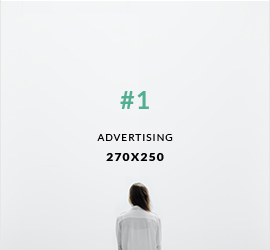10 things every designer should know
1. Design is a means, not an end.
As designers, we are hired not to continually amaze people with our self-expression, but to deftly exercise our craft in a way that solves business problems and ultimately increases value. We create order, consistency, and beauty for the purpose of communication. This requires listening and adapting in order to strategically execute the brand’s objective, not our own.
2. Balance intake vs. output.
One of the major benefits of being a designer in this age is the wealth of inspiration we have at our fingertips. Places like Behance, Dribbble, From Up North, FWA, Awwwards, etc. all showcase some of the best design work in the world — updated and refreshed by the minute. But if we spend a disproportionate amount of time intaking others’ work, we aren’t really learning and growing. That happens by doing; trying new things, techniques, styles, and processes. Look at what the best in the world are doing; then go create, work hard, and strive to get there.
This seems obvious, but whatever hopes, ambitions, and big hairy audacious dreams you may have for your career will always stay floating out there in the future if you don’t roll your sleeves up and hone your skill every day. Growth is never-ending, software is ever-evolving, and client needs are always shifting. Find one thing, and strive to do it better than anyone else in the world. If you’re going to sell the sizzle, you better bring the steak.
4. Question convention.
Convention is usually in place because it worked for someone, or perhaps a group of people, for a time. It feels safe and predictable. But if you’re not careful, it’s exactly what will cause you to end up looking and feeling and talking like everyone else. At times, embrace it. But there must be times where you question it, challenge the status quo, and take a creative risk by trying something new. It’s the only path to innovation.
5. Know the why, not just the what.
As designers, we can master the deliverables pretty quickly. Output can be memorized. But what makes something truly distinct in the marketplace is the story behind the product. To emotionally engage people — and if you want to influence them you must reach them on an emotional level — craft a story to bring your Why to life. People don’t just buy products. They buy what the product makes them feel. Why adds girth to your What.
6. Habits trump inspiration.
This is related to #2, but it’s important to focus on the process of doing, not just the polished end product. People can say they want to be anything, but if they don’t enjoy and embrace the process of becoming that thing, they’ll never be it. Inspiration is fleeting — it ebbs and flows depending on your mood. But if you go to work and get things done, despite your mood or how inspired you may feel, over time that’s what wins the day.
7. Focus and specialize, but respect peripheral skills.
Focus is the antidote to mediocrity. If you want to be great at something, it requires all the focus you can give it. This means saying no to a lot of things so you can say yes to a few. It means choosing your corner and pouring everything you have into dominating it. But it’s important to see it within the big picture of the business workplace. Know the context in which your skills thrive, which other skills they overlap, and how all the pieces are connected and working together. If you’re a designer, you don’t have to know how to code. But you have to know what code can and can’t do, as well as how to talk with developers. Understanding the various roles in the process gives you a stronger foundation for your superpower.
8. Swing for the fence. Every time.
As creative-type people, we all naturally have an idea in our heads of the perfect project. We think about how if the stars aligned, with the right client and audience and budget, we could create the greatest design the world has ever known. But it’s actually our job to take that approach with every single project. Whatever you’re working on is the most important project. Because for someone it is.
“Here is one of the few effective keys to the design problem — the ability of the designer to recognize as many of the constraints as possible — his willingness and enthusiasm for working within these constraints. Constraints of price, of size, of strength, of balance, of surface, of time and so forth.” – Charles Eames
If you’re following the rules of this post, every project will have inherent constraints. Success hinges on our ability to create within them.
10. We’re in this together.
I am continually amazed at the warmth, openness, and friendliness of the design community. I think we all realize that what we do, day in and day out, is difficult and nuanced. Sometimes our work takes a beating, and even though we know it’s not personal, at times it can feel like it. Plus, there’s not one way to design that’s right for everyone. We each have our own eye, process, stylistic preferences, skill level, client base, etc. that sharing what we know with each behooves both parties. We’re on the same team.
I’ll leave you with a final thought: Being a designer is a blessing. We get to play with color, shapes, type, and imagery to create things for people, and they pay us! That’s pretty incredible. So don’t lose sight of it, enjoy the hustle, and grow patiently. Hopefully, these 10 things help you on your journey.




0 comments